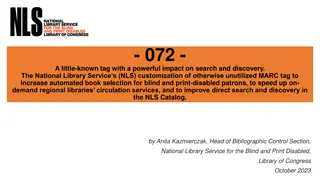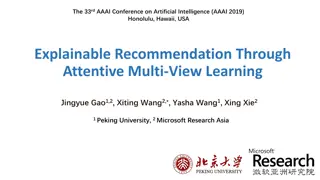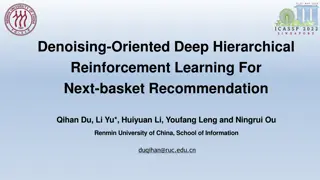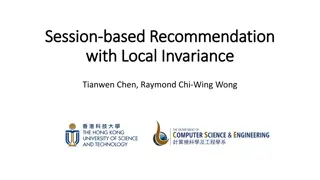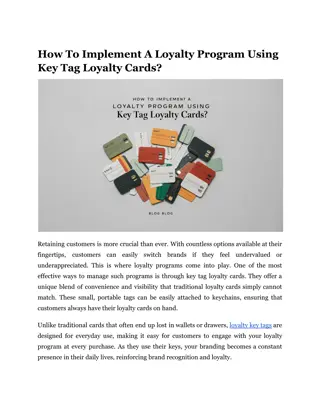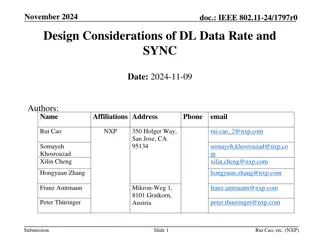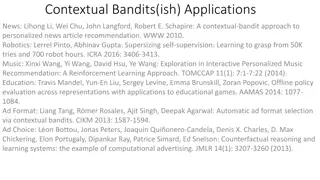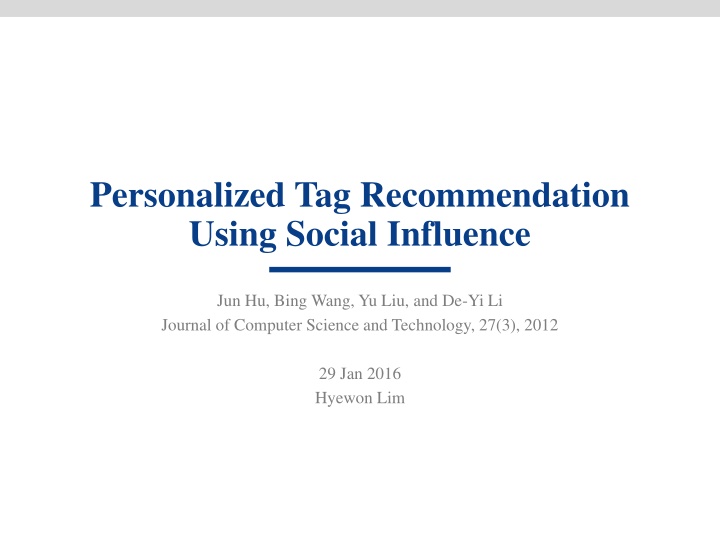
Enhancing Image Tagging with Social Influence
Explore the research on personalized tag recommendations leveraging social influence in image annotation, focusing on user behavior and the impact of social networks on tagging practices. The study delves into user influence measurement, data collection strategies, and evaluation of recommendation frameworks to enrich content information. Discover the significance of tag history, social contacts, and global tag co-occurrence for personalized tagging recommendations in the digital era.
Download Presentation

Please find below an Image/Link to download the presentation.
The content on the website is provided AS IS for your information and personal use only. It may not be sold, licensed, or shared on other websites without obtaining consent from the author. If you encounter any issues during the download, it is possible that the publisher has removed the file from their server.
You are allowed to download the files provided on this website for personal or commercial use, subject to the condition that they are used lawfully. All files are the property of their respective owners.
The content on the website is provided AS IS for your information and personal use only. It may not be sold, licensed, or shared on other websites without obtaining consent from the author.
E N D
Presentation Transcript
Personalized Tag Recommendation Using Social Influence Jun Hu, Bing Wang, Yu Liu, and De-Yi Li Journal of Computer Science and Technology, 27(3), 2012 29 Jan 2016 Hyewon Lim
Outline Introduction Data Collections Measurement of User Influence in Social Network Recommendation Framework Evaluation Conclusion
Introduction Tag Provide the semantic context through manual annotations The same photo can be annotated by another user It is possible to produce a different description Need of tag recommendation Users add very few tags or even none at all Particular image is only tagged by a single user
Introduction Tag recommendation Enriches the content information
Introduction Tag history Social contacts Personalized tag recommendation High co-occurrence Global tag co-occurrence Topological potential in contacts network Characterizes its ability of affecting other users
Data Collections Collect the users 3-hop away the seed user The use of tag has local effect Photos having at least two tags Statistics Users Photos Tags Contact Relationships Numbers 258,869 23,715,143 5,046,975 1,170,408
Outline Introduction Data Collections Measurement of User Influence in Social Network Recommendation Framework Evaluation Conclusion
Measurement of User Influence in Social Network Topological potential ??(?) : the potential at any point v produced by u Rules ??? is a continuous, smooth, and finite function ??(?) is isotropic in nature ??(?) monotonically decreases in the distance ? ? If ? ? = 0, ??(?) reaches maximum If ? ? , ??? 0
Measurement of User Influence in Social Network Gaussian function ? ? = ?? (? ?)2 2?2 Gaussian-type definition of topological potential node s influence will quickly decay as the topological distance increases Distance between viand vj ?? ? ?)2 Influence range 1 ? ?=1 1 ? ?=1 ? ?? ? ( ? ? ? ?? = ? ? ? =
Measurement of User Influence in Social Network Optimizing the influence factor Optimize ? to make the topological potential of each node most different When ? = 0 or ? , usually ? > ? (diameter), no interaction among nodes When 0 < ? < ?, Interaction among nodes and the node topological potential is much different
Measurement of User Influence in Social Network Optimizing the influence factor (cont.) Shannon s entropy A measure of uncertainty in an information system
Measurement of User Influence in Social Network Calculating the topological distance ? 1 1 ?? = ?? 1 ? ??? ???= ln + 1 1 ? ??? ??? 1 ??= ?(??) ? ? = ?? 1
Outline Introduction Data Collections Measurement of User Influence in Social Network Recommendation Framework Evaluation Conclusion
Recommendation Framework Tag co-occurrence
Recommendation Framework Contacts with social influence ? a b ?? ?? ?? ??
Recommendation Framework Aggregation methods Vote Method 1 Method 2 Method 3 Sum Method 1+2+3
Recommendation Framework Combination of candidate recommendation tags from different approaches Borda Count A single-winner election method Recommendation list Simple Combination Method 1 Method 3 Recommendation list
Outline Introduction Data Collections Measurement of User Influence in Social Network Recommendation Framework Evaluation Conclusion
Evaluation Evaluation metrics Mean Reciprocal Rank (MRR) Measures where in the ranking the first relevant tag is returned by system Success at Rank k (S@k) The probability of finding a good descriptive tag among the top k Precision at Rank k (P@k) The proportion of retrieved tags that are relevant
Evaluation Evaluation results Global tag co-occurrence User tagging history & user social contacts PT: the latest 10 tags PC: user tag co-occurrence SC: social contact based co-occurrence CC: global co-occurrence Not enough!
Evaluation Evaluation results Combination performance
Evaluation Evaluation results Combination performance
Evaluation Comparison with other personalized methods Adam et al. Use all 1-hop contacts tagging information Too many noises have been brought to the final tag list RSTE (Ma et al.) User-item matrix ( = 1) + trust-based system ( = 0) The authors set = 0 and use similarity to replace social trust
Conclusion Personalized tag recommendation User tagging history Global tag co-occurrence Measure user influence Benefits for the cold start problem of tag recommendation

